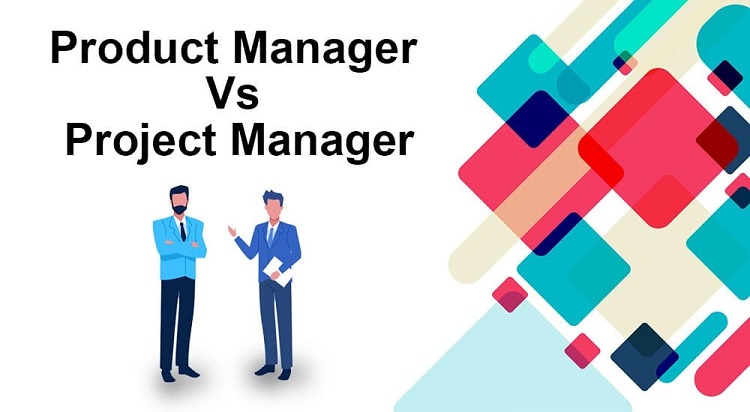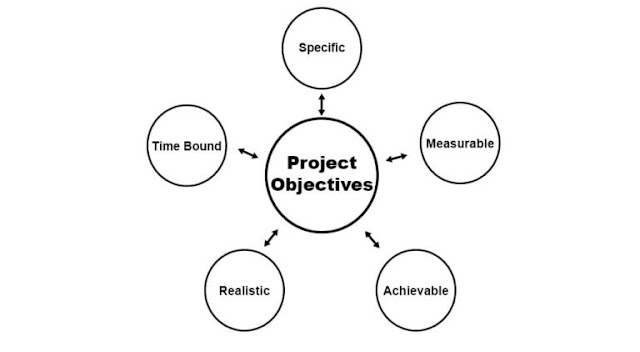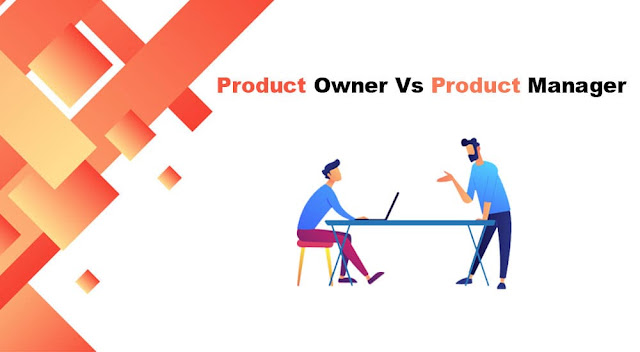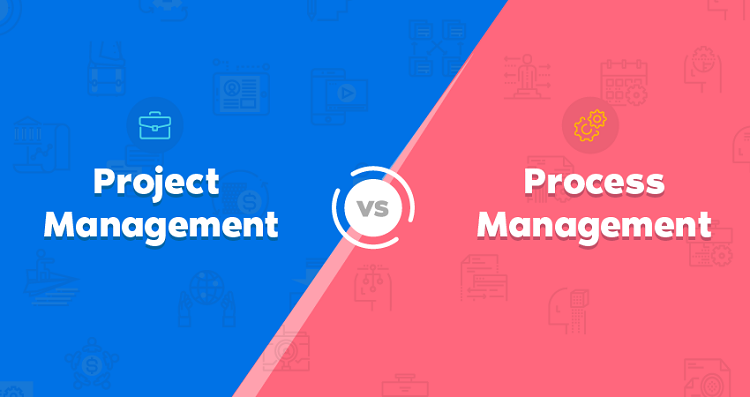Many professionals often confuse the roles of product managers and project managers. It is a common misconception, and many people use these terms interchangeably, as they are quite similar. Though they often work together on the same initiatives, they have distinct roles and responsibilities.
In today’s blog post, we will discuss these two roles and how they differ.
Product Manager Vs Project Manager
Let us first understand the terms product and project.
Read More: PMI Certifications
A product can be a tangible good, service, or system that solves customers’ problems and satisfies their needs.
A project is a process of creating a product or service. It is a collection of tasks with a timeline and a defined outcome. Projects revolve around a product, it is temporary, and its purpose is to develop and deliver a product.
On the other hand, a product is not temporary and evolves to meet customers’ needs. A product can involve several projects for its improvement and maintenance.
Product Manager
A product manager is responsible for the vision, strategy, and product goal. They look after the “what” and “why” part of the product. For example, what will the end-product look like? What problem will it solve?
Project Manager
Project managers are in charge of projects and are responsible for managing projects. They are focused on “how” and “when.” For example, how will the product be delivered? When will it be delivered?
Product Manager Vs Project Manager
Both roles require communication, organization skills, and profound market knowledge. While these two leaders are concerned with managing team members, producing the best end product, and ensuring customer satisfaction, they have many differences in their roles and responsibilities.
“A product manager concentrates on product development and releases, while a project manager coordinates, supervises, and oversees projects.”
Some of these differences are:
Question
The product manager and project manager answer different questions. The product manager deals with the “what” and “why” of the product. The project manager deals with the “how,” “when,” “where,” and “who.”
Responsibility
The product manager is responsible for the product’s creation, strategy, and development. In contrast, the project manager is concerned with the project plan execution and completion.
Timeline
The product manager does not have a fixed timeline. They have an ongoing lifecycle to see to the end-product and keep it up-to-date, so it continues to satisfy customer needs.
The project manager has a fixed schedule to complete the project and deliver the product. Once the product is delivered, the project is closed.
Focus
The product manager focuses on market research, customer needs, and target end-users. The project manager is focused on schedule, budget, project progress, and solving problems or obstacles that may arise along the way.
Product Manager – Roles, Responsibilities
Develops the Product Vision
The vision includes target customers, the problem it solves, key product success metrics, and other important things.
Creates a Product Roadmap and Strategy
This plan describes what needs to be done to meet the vision. This roadmap involves a lot of planning with varying opinions.
Does Market Research
The product manager must understand the market, conduct risk assessments, and forecast product needs, market trends, competition, etc.
Gathers Customer Satisfaction Data
The product manager is responsible for understanding customer needs and measuring customer satisfaction using surveys, reviews, etc.
Organizes Product Launches
The product manager must know the product launch time, whether to launch it fully or start small with a Minimum Viable Product (MVP).
Controls Development Process
The product manager has to improve the product to ensure product continuity. They constantly have to update products with new features to ensure the product is not outdated.
The product manager helps in ideation, strategy, delivery, growth, sales, improvements, pricing, and monetization.
Challenges Faced by Product Managers
The product manager has a huge role, but it is not smooth. Carrying out responsibilities comes with challenges.
Some challenges a product manager may face include:
Meeting Deadlines
Deadlines can make or break the product’s success. Meeting deadlines can be difficult, especially sticking to a tight product launch deadline. Launching a new product is complex, so the product manager must stay on schedule to avoid delays.
Identifying and Rectifying Product Failures
If products are not performing well, the product manager must find the cause and solve it. They have to decide to change the product or discontinue it. This is a tough decision, as the outcome may be good or bad.
Sourcing Materials for Production
The product manager sources materials for products. This is a critical job. The product manager must find quality materials from credible vendors to ensure high-quality products. This is tough as they have to stick to the budget while dealing with vendors.
Managing Cross-Departmental Communication
Being a product manager means working with different departments like marketing, engineering, etc. This is necessary for production and to keep the product lifecycle continual.
Project Manager – Roles, Responsibilities
Throughout the project life cycle, project managers have many responsibilities. They are responsible for gathering the product vision, creating a timeline, and coordinating with the project team to meet deadlines and achieve project objectives.
Develops a Project Management Plan
A project manager develops a plan to achieve the product manager’s vision. This project plan includes the scope of work, defined milestones, tasks, other subsidiary project management plans, etc.
Delegates Tasks
After establishing the milestones, timeline, and budget, the project manager assigns tasks to the team members and follows up until they are completed. The project manager tracks progress and ensures it is as per the planned progress.
Communicates with the Team
Communication is an important aspect of project management, as the project manager has to coordinate with different stakeholders throughout the project life cycle to complete the project.
Challenges Faced by Project Managers
Project management can be complex due to the many responsibilities involved. Project managers tend to face challenges as they carry out their responsibilities.
Some of these challenges are:
Maintaining Project Timelines
Project managers track project timelines, as project delays are costly. They must maintain the project timeline to ensure the project is on schedule.
Implementing Change Requests
Projects usually don’t progress according to plan, so many change requests arise. The project manager is responsible for influencing factors causing the changes, reviewing change requests, and forwarding for approval.
Identifying and Tracking Risks
The project manager is responsible for identifying and tracking potential risks and managing them.
Keeping Up with Market Trends
Project managers have to be aware of market trends, tools, and resources. Following the right market trend will favor the project and the product.
Which Role is Suitable for the Team?
The most suitable role for the team depends on the objective. A project manager helps build the product and deliver it to the product manager.
On the other hand, a product manager strategizes new launches, coordinates with production and development teams, and innovates the product portfolio.
The scenarios below highlight some situations requiring product and project managers for the team.
Scenario 1:
A team struggling to release new products and keep the production process efficient.
Solution 1:
A product manager strategizes new product ideas and coordinates with the production team for further development.
Scenario 2:
The team struggles to keep projects on schedule and manage project changes.
Solution 2:
A project manager can oversee deliverables and allocate resources, keeping the team updated about the project schedule and managing changes.
Product Manager and Project Manager Career Paths
The process of becoming either is quite similar, especially when it comes to having technical knowledge and soft skills. However, there are different pathways to becoming a product manager or project manager.
Skills
Soft skills are essential for both product and project managers.
Product Manager Skills
1. Data analysis
2. Market review
3. Price modeling
4. Essential UX knowledge
5. Primary business knowledge
Project Manager Skills
1. Understanding of project management approaches like Scrum, Agile, and Waterfall
2. Risk management
3. Project management tools
4. Planning
5. Basic budgeting
Certifications
Certifications aren’t required to become a project manager or product manager. However, having one can provide an edge in job applications.
Project management certifications are more common than product management certifications.
Project management certifications include:
1. Project Management Professional (PMP)
2. Certified Associate in Project Management (CAPM)
3. Certified ScrumMaster (CSM)
4. Professional Scrum Master (PSM I)
Product management certifications include:
1. Product School – Product Manager Certificate
2. Pragmatic Institute – Certified Product Manager
3. AIPMM Certified Product Manager Credential
Product Manager or Project Manager: Who Earns More?
Product Managers earn more than project managers in the US. The average product manager’s salary in the US is 111,755 USD per year, while a project manager in the US earns an average salary of 87,637 USD per year, according to August 2021 data from Glassdoor.
Frequently Asked Questions (FAQ)
Project Manager or Product Manager: Which is Better?
Generally, product managers tend to have a higher rank in an organizational hierarchy. They are in charge of making more advanced decisions than project managers.
Project managers are more versatile as they handle different projects. They are more versatile and dynamic.
Can a Product Manager be a Project Manager?
Product managers and project managers share many skills. Product managers can be project managers as well. Both roles are demanding, and dealing with both roles simultaneously can be exhausting and challenging, which will affect the progress and quality.
Product managers can handle project management tasks. This practice is common in smaller companies with a lesser workload.
Source: pmstudycircle.com





















